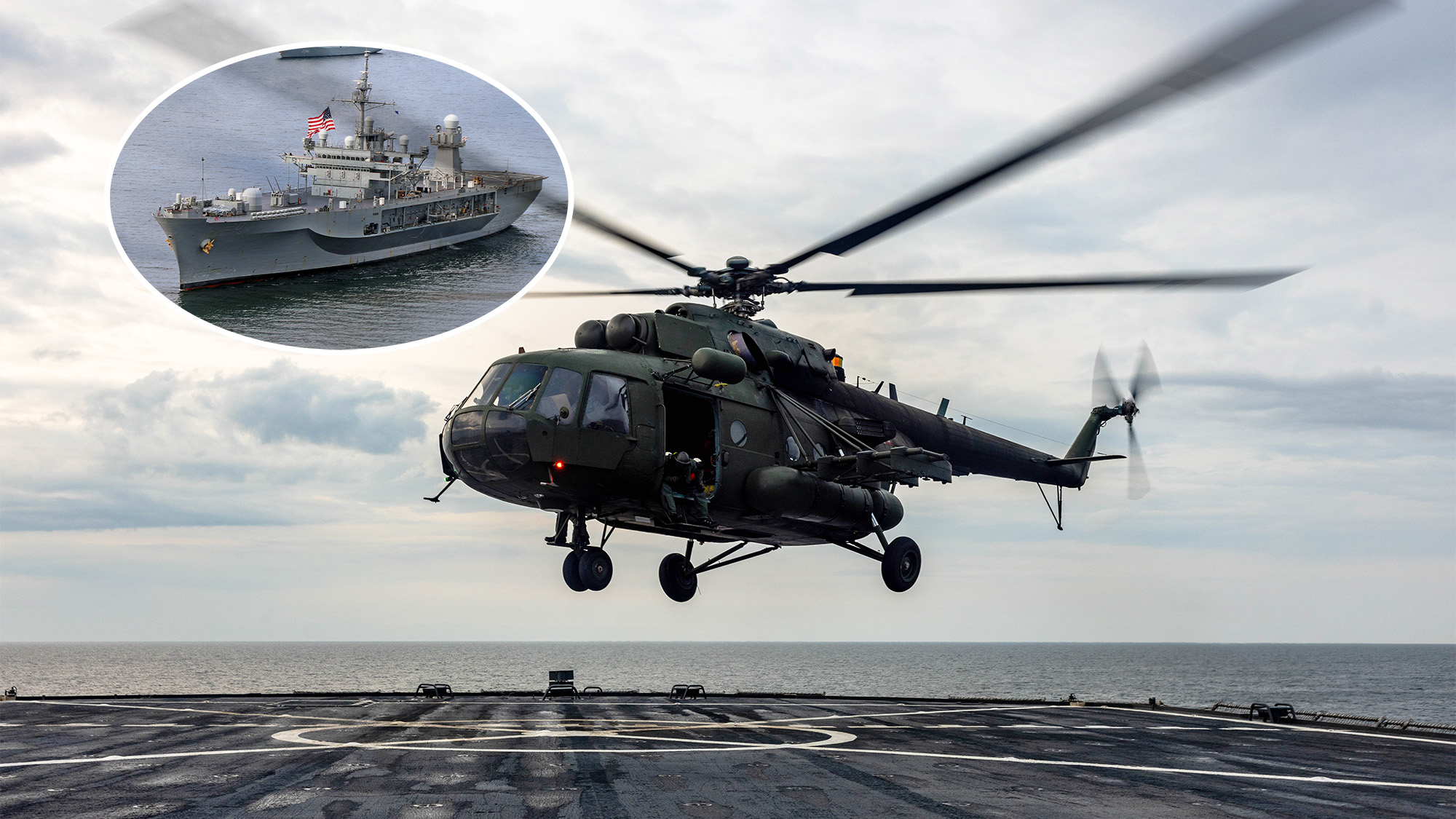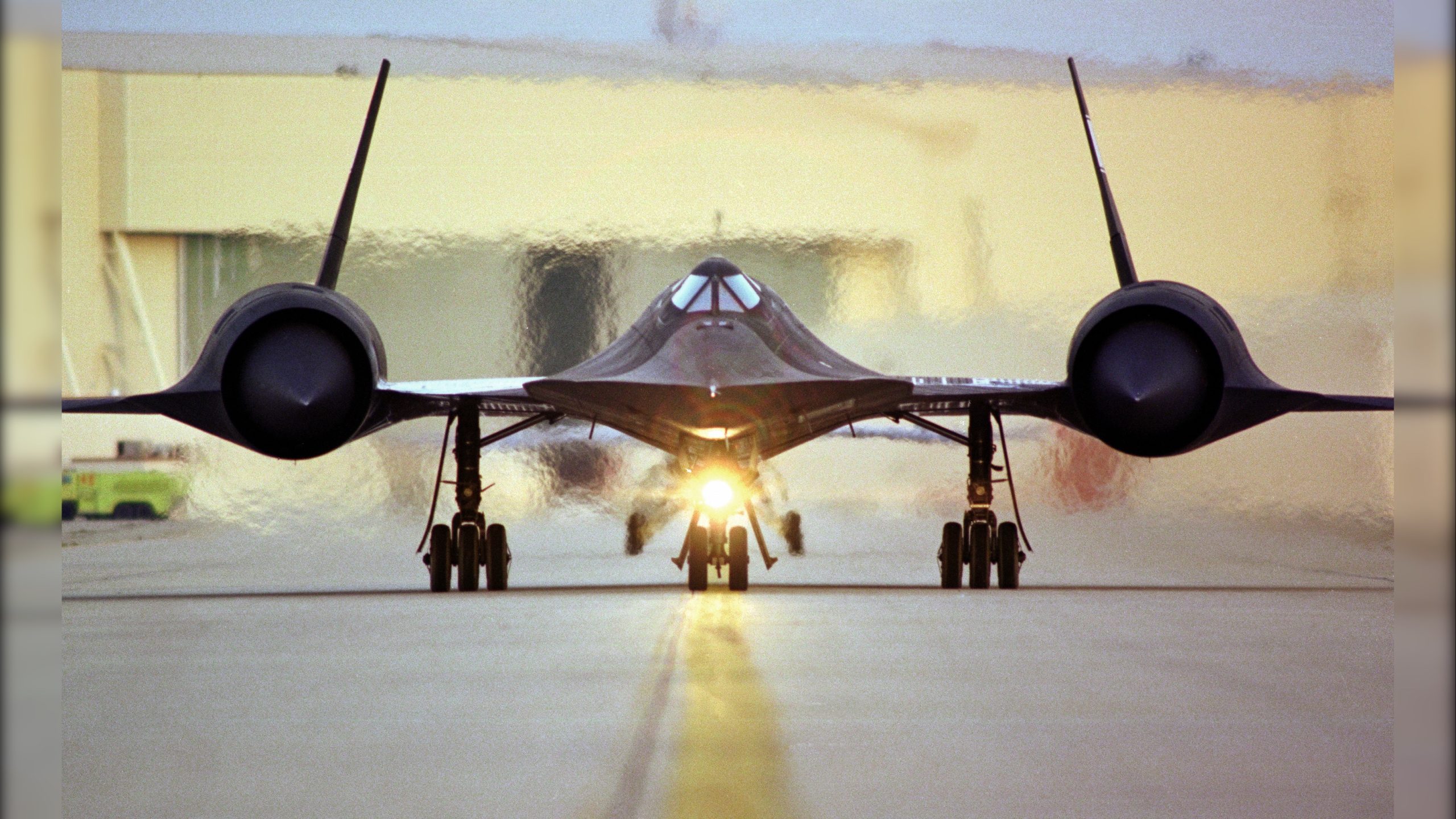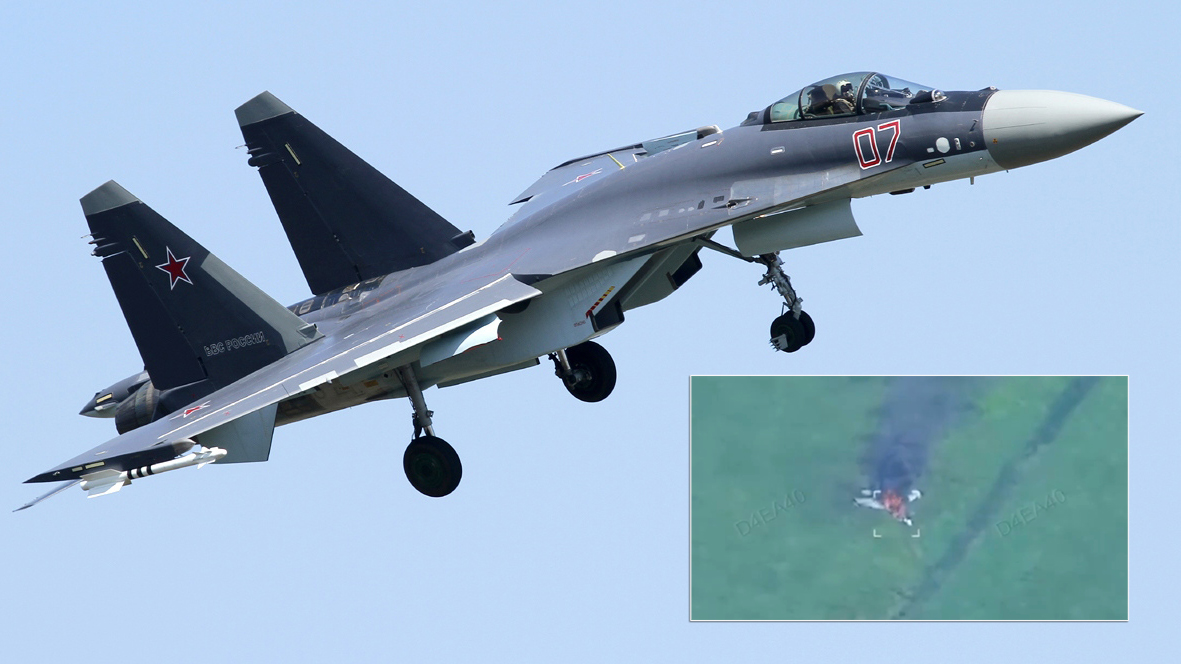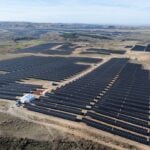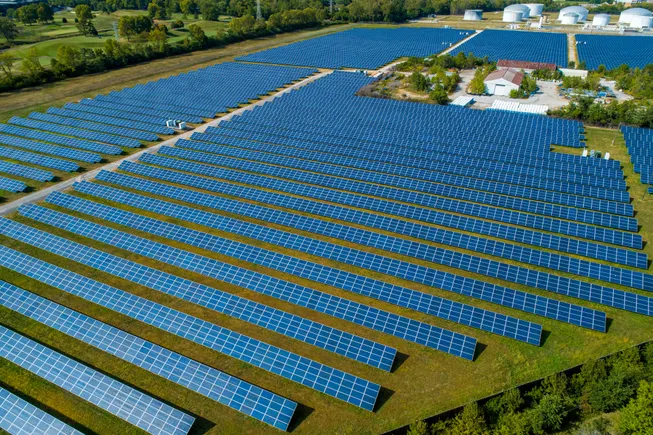The D Brief: POTUS turns Guard on LA protestors; Russia’s record-breaking strike; Fiber-drone photos; NATO-summit preview; And a bit more.
Trump ordered a U.S. military response to protests against immigration enforcement in California. In a memo announcing the move, President Donald Trump invoked his Title 10 authority (10 U.S.C. § 12406) to federalize and deploy 2,000 National Guardsmen in Los Angeles Saturday evening, citing a need to protect “federal personnel and property”—that is, Immigration and Customs Enforcement agents whose recent raids in the city have drawn protests. Latest: The LA police declared the downtown to be an unlawful assembly area and told protesters to go home Sunday evening. “Los Angeles police said some protesters had thrown concrete projectiles, bottles and other items at police,” Reuters reports. “Police declared several rallies to be unlawful assemblies and later extended that to include the whole downtown area.” Almost 40 people had been arrested by Sunday evening, Police Chief Jim McDonnell said. Trump’s federalizing of the Guard marked the first time since 1965 that a president has sent troops into a state without a request from its governor, according to Elizabeth Goitein of the Brennan Center for Justice. In 1965, the federalization occurred to protect civil rights demonstrators; in 2025, the federalization occurred to protect ICE agents. The U.S. military’s Northern Command took charge of the Guard troops, announcing Sunday the creation of “Task Force 51, with a two-star general, as the ground command and control element over the Title 10 forces.” By the evening, an estimated 300 members of the California Army National Guard’s 79th Infantry Brigade Combat Team deployed to Los Angeles, Paramount, and Compton, California, NORTHCOM said in a statement. Trump’s Pentagon chief threatened to send active duty Marines to Los Angeles, claiming Saturday evening that “violent mob assaults” and a “dangerous invasion” have caused the Marines to be “on high alert” from their base at Camp Pendleton. It’s worth noting that in his threat to send Marines, Defense Secretary Pete Hegseth cited no law that would allow such a move. “Any use of active-duty troops to enforce [10 U.S.C. § 12406] under this memorandum would thus be a clear violation of the Posse Comitatus Act,” Goitein said. “The administration would likely claim an inherent constitutional right to protect federal personnel and property (in keeping with the memo’s language). But the Posse Comitatus requires ‘express’ authorization—not a claim of implied power,” she warned. About those active duty troops: They consist of “Approximately 500 Marines from 2nd Battalion, 7th Marines at Twentynine Palms, California,” and they “are in a prepared to deploy status should they be necessary to augment and support the DoD’s protection of federal property and personnel efforts,” NORTHCOM said in its statement. California’s governor called Trump’s decision “unlawful” and has formally asked him to withdraw the National Guard. “We didn’t have a problem until Trump got involved,” Gavin Newsom said on social media Sunday evening. “This is a serious breach of state sovereignty—inflaming tensions while pulling resources from where they’re actually needed.” Latest: Newsom also said California will file a lawsuit challenging Trump’s federalizing of the Guard, the governor said Monday, adding: “Pete Hegseth is a joke.” Some legal background: On Saturday, Trump claimed the protests “constitute a form of rebellion against the authority of the Government of the United States.” But the law he invoked is not the Insurrection Act, and the Posse Comitatus Act forbids the military (including federalized National Guard troops) from being used for domestic law enforcement. Another thing: The U.S. military’s job is not to police fellow citizens; it is to protect against foreign threats. More background: “10 USC 12406 has not historically been treated or used as an independent authority. Trump’s move is vulnerable to legal challenge on that ground alone,” Goitein explained. But “No president has ever federalized the National Guard for purposes of responding to potential future civil unrest anywhere in the country,” she added. “Preemptive deployment is literally the opposite of deployment as a last resort. It would be a shocking abuse of power and the law.” For what it’s worth: Homeland Security Secretary Kristi Noem just last year claimed federalizing the National Guard “would be a direct attack on state’s rights.” Observations from a former Naval War College professor: “Sending in the National Guard is meant to provoke, not pacify, and [Trump’s] power will only grow if he succeeds in tempting Americans to intemperate reactions that give him the authoritarian opening he’s seeking,” Tom Nichols argued in The Atlantic on Sunday in a piece titled, “Trump Is Using the National Guard as Bait.” “Trump sees the U.S. military as his personal honor guard and his private muscle,” Nichols writes, “and he’s going to get a show from his honor guard in a birthday parade next weekend. In the meantim

Trump’s federalizing of the Guard marked the first time since 1965 that a president has sent troops into a state without a request from its governor, according to Elizabeth Goitein of the Brennan Center for Justice. In 1965, the federalization occurred to protect civil rights demonstrators; in 2025, the federalization occurred to protect ICE agents.
The U.S. military’s Northern Command took charge of the Guard troops, announcing Sunday the creation of “Task Force 51, with a two-star general, as the ground command and control element over the Title 10 forces.” By the evening, an estimated 300 members of the California Army National Guard’s 79th Infantry Brigade Combat Team deployed to Los Angeles, Paramount, and Compton, California, NORTHCOM said in a statement.
Trump’s Pentagon chief threatened to send active duty Marines to Los Angeles, claiming Saturday evening that “violent mob assaults” and a “dangerous invasion” have caused the Marines to be “on high alert” from their base at Camp Pendleton.
It’s worth noting that in his threat to send Marines, Defense Secretary Pete Hegseth cited no law that would allow such a move. “Any use of active-duty troops to enforce [10 U.S.C. § 12406] under this memorandum would thus be a clear violation of the Posse Comitatus Act,” Goitein said. “The administration would likely claim an inherent constitutional right to protect federal personnel and property (in keeping with the memo’s language). But the Posse Comitatus requires ‘express’ authorization—not a claim of implied power,” she warned.
About those active duty troops: They consist of “Approximately 500 Marines from 2nd Battalion, 7th Marines at Twentynine Palms, California,” and they “are in a prepared to deploy status should they be necessary to augment and support the DoD’s protection of federal property and personnel efforts,” NORTHCOM said in its statement.
California’s governor called Trump’s decision “unlawful” and has formally asked him to withdraw the National Guard. “We didn’t have a problem until Trump got involved,” Gavin Newsom said on social media Sunday evening. “This is a serious breach of state sovereignty—inflaming tensions while pulling resources from where they’re actually needed.”
Latest: Newsom also said California will file a lawsuit challenging Trump’s federalizing of the Guard, the governor said Monday, adding: “Pete Hegseth is a joke.”
Some legal background: On Saturday, Trump claimed the protests “constitute a form of rebellion against the authority of the Government of the United States.” But the law he invoked is not the Insurrection Act, and the Posse Comitatus Act forbids the military (including federalized National Guard troops) from being used for domestic law enforcement.
Another thing: The U.S. military’s job is not to police fellow citizens; it is to protect against foreign threats.
More background: “10 USC 12406 has not historically been treated or used as an independent authority. Trump’s move is vulnerable to legal challenge on that ground alone,” Goitein explained. But “No president has ever federalized the National Guard for purposes of responding to potential future civil unrest anywhere in the country,” she added. “Preemptive deployment is literally the opposite of deployment as a last resort. It would be a shocking abuse of power and the law.”
For what it’s worth: Homeland Security Secretary Kristi Noem just last year claimed federalizing the National Guard “would be a direct attack on state’s rights.”
Observations from a former Naval War College professor: “Sending in the National Guard is meant to provoke, not pacify, and [Trump’s] power will only grow if he succeeds in tempting Americans to intemperate reactions that give him the authoritarian opening he’s seeking,” Tom Nichols argued in The Atlantic on Sunday in a piece titled, “Trump Is Using the National Guard as Bait.” “Trump sees the U.S. military as his personal honor guard and his private muscle,” Nichols writes, “and he’s going to get a show from his honor guard in a birthday parade next weekend. In the meantime, he’s going to flex that muscle, and prove that the officers and service members who will do whatever he orders are the real military.”
“ICE is on a rampage, but physically assaulting or obstructing its agents—and thus causing a confrontation with the cops who have to protect them, whether those police officers like it or not—will provide precisely the pretext that some of the people in Trump’s White House are trying to create,” Nichols argues.
Bigger picture: Trump “is resorting to the grand theater of militarism because he is losing on multiple fronts in the courts—and he knows it,” says Nichols. “The law, for most people, is dreary to hear about, but one of the most important stories of Trump’s second term is that lawyers and judges are so far holding a vital line against the administration, sometimes at great personal risk.”
Historian’s reax: “There is real weakness behind the regime’s power grab.,” Heather Cox Richardson of Boston College wrote Sunday evening. “Trump’s promised trade deals have not materialized, and indicators show his policies are hurting the economy…There is no doubt that as their other initiatives have stalled and popular opinion is turning against the administration on every issue, the Trump regime is trying to establish a police state.”
“We are one flared temper, one foolish incident, away from a true national emergency,” said Joyce Vance, former U.S. Attorney for the Northern District of Alabama. “This is a moment where de-escalation is called for. But it doesn’t look like that’s what the Trump administration wants here,” she added. Indeed, “They are not taking steps to de-escalate. To the contrary, they continued to dig in on Sunday afternoon.”
Worth noting: “As written, Trump’s Action is not limited to California,” Vance continues. “The framework is there for this to expand to other states, for instance, if protests against ICE operations erupt.”
Something to watch for: If Trump invokes the Insurrection Act, “The military can’t go any further than their civilian counterparts could in enforcing the law,” Vance explains. “They can arrest people, if the law authorizes it, or disperse them. However, our constitutional rights would still remain in effect. That constitutional context is not an environment in which members of the military are accustomed to operating, which could present its own complications.”
By the way: ICE arrested a former Afghan National Army soldier at his home in Texas, Houston Public Media reported last week. He entered the U.S. legally, has no criminal record, and was applying for asylum, his attorney says. His case appears to be the result of Trump’s decision to de-document legal Afghan immigrants.
Expert reax: “This guy did nothing wrong. He broke not a single law. He was a guard at a base that housed U.S. troops. He came here legally through humanitarian parole. He had an asylum application pending. Yet the Trump admin had ICE grab him anyway,” said Aaron Reichlin-Melnick of the American Immigration Council.
Related reading:
- “DHS memo details how National Guard troops will be used for immigration enforcement,” NPR reported Friday, before all the protests surged, seizing national headlines;
- “The [California] city of Glendale cancels a contract that allows ICE to house detainees in its local jail,” the Associated Press reported Monday;
- “Trump’s travel ban takes effect as tensions escalate over immigration enforcement,” AP reported separately Monday;
- “Australian journalist hit by 'rubber bullet',” the BBC reported Monday;
- In big-picture takes, “Trump Jumps at the Chance for a Confrontation in California Over Immigration,” the New York Times reports;
- And “Anti-ICE demonstrators set fire to driverless cars, tear gas used to move crowds,” the Wall Street Journal writes in its front-page coverage.
Welcome to this Monday edition of The D Brief, a newsletter dedicated to developments affecting the future of U.S. national security, brought to you by Ben Watson with Bradley Peniston. Share your tips and feedback here. And if you’re not already subscribed, you can do that here. On this day in 1968, President Lyndon B. Johnson declared a national day of mourning following the assassination of Senator Robert F. Kennedy.
Europe
Move faster, share things: A former NATO transformation chief previews the summit. American reticence and Russian aggression have created a sense of urgency for the upcoming NATO Summit in The Hague, where leaders plan to redouble efforts toward digital transformation and multi-domain operations. That’s according to French Gen. Philippe Lavigne, a former chief of staff of the French Air and Space Force and a former NATO Supreme Allied Commander for transformation.
Lavigne talked with Defense One’s Patrick Tucker as part of a series of podcasts ahead of the 2025 Globsec Forum, taking place in Prague from June 12 to 14. (Defense One is a media partner of the conference.) Read the highlights, here, and come back for the full podcast later today.
Russia launched its biggest drone attack of the war so far overnight Sunday, Ukrainian officials said Monday. “Ukraine's air defence units downed 460 out of 479 drones and 19 out of 20 missiles launched by the Russian forces,” Reuters reports from Kyiv.
Targeted: A military airfield in Dubno, the western part of Ukraine, appeared to be one of the main targets. So far, just one person is known to have been injured, according to AP.
Additional reading: “Fiber Optic Bird’s Nest Heralds A Fiber Drone Summer In Ukraine,” David Hambling reported for Forbes last week. The article’s photos and video show the drones in action—reaching kilometers away and littering Ukrainian fields with glittering threads.
Etc.
Hegseth headed to the Hill: SecDef Pete Hegseth will defend Trump’s 2026 budget proposal—and likely other things when grilled by Democrats—at the House and Senate Appropriations hearing on Tuesday and before the House Armed Services hearing on Thursday. Military Times has a preview.
By the way: “White House security staff warned Musk’s Starlink is a security risk,” the Washington Post reported Saturday.
And lastly: A new startup aims to build a 100-foot robot boat by year’s end. HavocAI, which has built 42 autonomous vessels in 18 months, is working on a 100-footer, CEO Paul Lwin tells Defense One’s Lauren C. Williams in an interview. Read on, here. ]]>





































































![[Podcast] Trial Trailblazers: Behind clinical breakthroughs](https://imgproxy.divecdn.com/cr_gUY8HHfHKWVfM5mEkCyXB9OzVqKd0L_Zq5ZJQSoM/g:ce/rs:fit:770:435/Z3M6Ly9kaXZlc2l0ZS1zdG9yYWdlL2RpdmVpbWFnZS9CaW9QaGFybWFEaXZlX1BvZGNhc3RfY292ZXIxMzQ2eDcyOV9SMi5wbmc=.webp)













